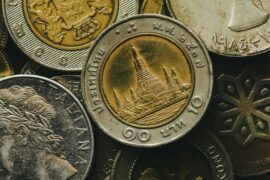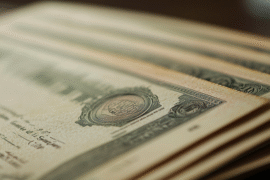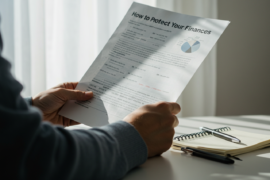This article may contain references to products or services from one or more of our advertisers or partners. We may receive compensation when you click on links to those products or services. Nonetheless, our opinions are our own.
Key Highlights
- Demand deposit accounts, like checking accounts, can have secret fees that affect your money.
- Understanding these fees and how they are calculated to manage your money well is essential.
- This guide will help you find and avoid the typical hidden fees linked to demand deposit accounts.
- We will look at typical fee types, tips to spot them, and ways to lower your costs.
- By knowing this, you can keep more money for yourself and feel better about your finances.
Introduction
Managing your demand deposit accounts is essential for your finances. These accounts, usually at banks, help you with daily transactions. However, many people overlook the hidden fees in these accounts. These fees can slowly reduce their savings.
Understanding Demand Deposits
Demand deposits let you use your money right away. This differs from time deposits, like certificates of deposit, which don’t let you take your money out until a specific date. Demand accounts are outstanding for everyday needs, like paying bills, purchasing, and receiving direct deposits.
Time deposits usually give higher interest rates. On the other hand, demand deposit accounts let you quickly get your money. It is essential to balance how easy it is to access your money and how much you can earn. This helps you manage these accounts well.
The Basics of Demand Deposit Accounts (DDAs)
Demand deposit accounts (DDAs) are essential for banks and give you quick access to your money. But, they can have hidden fees that might lower your balance. Knowing the demand deposit rate, how fees impact your average earnings, and the rules for using the account can help you manage your money better.
How Demand Deposits Work in the Banking System
Demand deposits make up a big part of a bank’s available money. Customers keep adding, taking out, and moving money, which affects how easily a bank can access cash. Banks need enough cash for withdrawals, but they also invest some deposits to make money. Good management helps banks keep enough funds aside while making a profit.
Demand deposit accounts are easy to use but sometimes have hidden fees. If you don’t watch these charges, they can grow and hurt your money situation. Knowing about these fees is the first step in not wasting money.
Common Types of Fees
| Fee Type | Description | Example |
|---|---|---|
| Monthly Maintenance Fee | A recurring charge for keeping the account open. | $10 per month if the balance falls below $1,500. |
| Overdraft Fee | Charged when you spend more than your available balance. | $35 per overdraft. |
| ATM Fee | Charged for using an out-of-network ATM. | $2.50 per transaction. |
| Paper Statement Fee | A charge for receiving a paper statement instead of an electronic one. | $5 per month. |
| Inactivity Fee | Applied when there is no account activity for a specified period. | $10 per month after 12 months of inactivity. |
Extra fees might be charged for services like stop payments, wire transfers, and insufficient funds transactions. These charges help cover the bank’s costs and can significantly affect your balance.
To avoid hidden fees, consider these strategies:
- Carefully Review Account Statements— Regularly review your statements for charges you do not recognize.
- Read the Fine Print—Check your account’s terms and conditions. This will help you find any fees.
- Use Online Banking Tools—Many banks offer online tools. These can help you monitor your spending and notice any strange charges.
- Ask Your Bank Directly—If you do not understand any fees, contact customer service for help.
- Compare Banks—Look into different banks. This will help you find the best account options.
By staying updated, you can cut back on banking costs that are not needed.
To avoid hidden fees, you must do more than be aware. You also need to manage your demand deposit account actively. Use these steps to cut down on extra charges.
Step 1: Review Your Account Terms Carefully
Understanding the terms and conditions of your account is essential. Keep an eye on:
- Fee Schedule—Find all charges linked to your account.
- Minimum Balance Requirements—See if keeping a minimum balance can help you skip fees.
- Transaction Limits—Look if there are limits for free transactions each month.
- Overdraft Protection—Look into choices for overdraft protection to avoid expensive fees.
Step 2: Monitor Your Account Regularly
With digital banking tools, tracking your account activity is simpler than ever. Here are some key benefits:
- Early Detection of Errors—Find unauthorized transactions and tell someone right away.
- Tracking Spending Habits—Knowing your costs can help you budget better.
- Avoiding Overdrafts—Create alerts for low balances to stop overdraft fees.
Making it a habit to check your money helps you stay on top of your finances.
Conclusion
Demand deposit accounts are easy to use but may have hidden fees that can grow fast. You can avoid extra charges by knowing your account details, keeping track of your transactions, and managing fees. Stay informed, check your account activity, and find ways to reduce banking costs. If you want more help, talk to your bank or a money advisor.
Frequently Asked Questions
What is a demand deposit account?
A demand deposit account lets you immediately take out money without any notice. Checking accounts is a typical example. They provide direct deposit, a debit card, and online banking options to help you manage your money quickly.
How can I stay away from extra fees in my checking account?
To avoid hidden fees, look at your statements often. Read the terms and conditions carefully. You can also use online banking tools. By comparing fees from different banks, you can find a better choice that saves you money.
Common hidden fees include monthly fees, overdraft fees, out-of-network ATM fees, paper statement fees, and inactivity fees. Your bank’s fee schedule can help you find possible charges.
Can demand deposit fees affect my tax obligations?
Most bank fees cannot be deducted from taxes for individuals. However, some fees might be deductible if you use a demand deposit account for business. It’s best to talk to a tax expert for specific advice.
I want to know where I can get more details about how to avoid fees on demand deposits.
Look at resources from the Consumer Financial Protection Bureau (CFPB), the Federal Reserve, or your bank’s website for good money advice. These places give tips on how to manage your money and understand fees.

Reviewed and edited by Albert Fang.
See a typo or want to suggest an edit/revision to the content? Use the comment form below for feedback.
At FangWallet, we value editorial integrity and open collaboration in curating quality content for readers to enjoy. Much appreciated for the assist.
Did you like our article and find it insightful? We encourage sharing the article link with family and friends to benefit as well - better yet, sharing on social media. Thank you for the support! 🍉
Article Title: Demand Deposit Taxes: What You Need to Know to Avoid Hidden Fees
https://fangwallet.com/2025/03/19/demand-deposit-taxes/The FangWallet Promise
FangWallet is an editorially independent resource - founded on breaking down challenging financial concepts for anyone to understand since 2014. While we adhere to editorial integrity, note that this post may contain references to products from our partners.
The FangWallet promise is always to have your best interest in mind and be transparent and honest about the financial picture.
Become an Insider
Editorial Disclaimer: The editorial content on this page is not provided by any of the companies mentioned. The opinions expressed here are the author's alone.
The content of this website is for informational purposes only and does not represent investment advice, or an offer or solicitation to buy or sell any security, investment, or product. Investors are encouraged to do their own due diligence, and, if necessary, consult professional advising before making any investment decisions. Investing involves a high degree of risk, and financial losses may occur including the potential loss of principal.
Source Citation References:
+ Inspo
There are no additional citations or references to note for this article at this time.












































